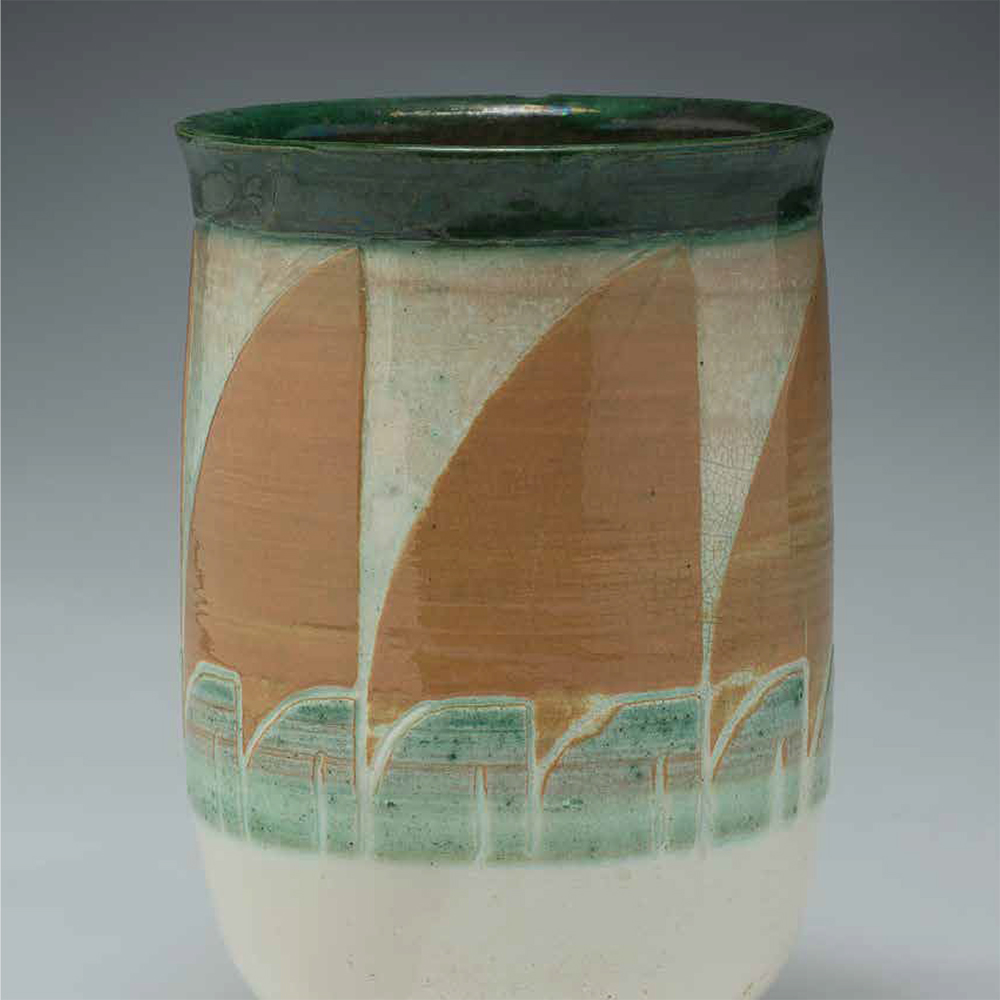Lots of gratitude to Alfred University for both putting on this exhibition two years ago and for allowing Cfile to publish Ezra Shales’ crucial essay, Pioneering a Platform for American Ceramics. If you are a campus member, view the essay, or begin your 30-day free trial.
For the first time ever, woman ceramic artists, namely Eva Ziesel, Marion Fosdick, Maria Martinez, Maija Grotell and more, are recognized for their contribution as a group of women who dedicated their lives to their work and to education of ceramic arts, and were adequately appreciated for neither. In the essay, Shales argues in the years between 1925 and 1960, right before abstract expressionism, women professionally dominated the field.
I assembled some particularly striking quotes from the essay below:
“Celebrations of eminent Bauhausler or other recognized Modernists, such as [Eva] Ziesel, Lucy Rie, or Beatrice Wood situate them as outliers, not a constitutive feature of the landscape but more like an archipelago or chain of connected monuments. The time is ripe to reevaluate overlooked work made by these groundbreaking women artists, factory artisans, and professors or art and claim their fundamental position in the historic narrative. Their biographies cultivate immediate sympathy but remain skeletal. We have a surfeit of images of these women quietly handling clay with downcast eyes, rarely suggesting that they were bold artistically or acted as agents of change. It is their work that we must examine and understand—in their craftsmanship are meanings and intentions both latent and overt.”
“While it often surprises audiences when they learn that American art schools began to encourage female students to shape their own pottery on the wheel only as recently as the 1920s, (and not simply to paint and ornament pots), that watershed decade was when women first gained the right to vote in the United States. Just as hard-won as the vote was women’s right to act as “formgivers,” an elegant Scandinavian term that describes inventive sculptural designing. Ceramics might not have been considered a field or discipline outside a few schools in America, but it was a vocation many women embraced as a new way to image their lives.”

“While the historical ornament and eclectic vocabularies employed from the 1930s through 1950s have long been regarded as conventional—a predictable calm before the storm of abstract expressionist and pop work in the 1960s—these women and their work can no longer be seen as conservative. They opted for unconventional lives in dedicating themselves to art. Their multilateral engagement with Persian, Chinese, Anglo, and a large variety of folk aesthetics defies the reductive and monocultural ideal inherent to traditionalism. In hindsight these women occupied important positions in the field, and were part of the groundwork for the feminist movement of the late twentieth century that began to redress the imbalance.”

Maija Grotell, Vase, 1940, stoneware, Gift from Edward C. Moore to The Metropolitan Museum of Art, New York

Clair Patterson, St. Francis, 1946, stoneware, gift from Winslow Anderson to Alfred Ceramic Art Museum
Do not miss out on Shales’ incredible relevant essay. If you are a campus member, read the essay, or begin your 30-day free trial.



Add your valued opinion to this post.